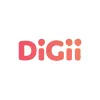Take a look inside 6 images
DiGii Social
Pros: Automatic filtering, informative brief videos, and a high level of teacher control.
Cons: Content filters don't catch everything. Videos lack closed captioning.
Bottom Line: If students take to it and teachers can support it, DiGii Social can level up digital citizenship awareness in a safe yet authentic context.
Upper elementary teachers can use DiGii Social as a part of their school or classroom digital citizenship instruction. DiGii Social is a safe place for 11 and 12 year-olds to learn the do's and don'ts of online behavior. At this age, most students can't legally access social media apps or sites such as Facebook, Instagram, Snapchat, or TikTok. DiGii Social allows students to learn online best behaviors rather than dive into a "real" platform without prep. Content themes include digital health, security, safety, identity legalities (like cyberbullying), and relationships. Each of these areas has a set of roughly three-minute videos that hits on key knowledge. Unfortunately, videos don't have captions.
Teachers might be tempted to use DiGii Social as a pseudo-LMS by posting academic activities or discussions. However, DiGii Social isn't meant for academic use. It's designed for students to interact with each other in an authentic social media environment. DiGii Social suggests letting students use it between classes or during breaks, the way adults use social media. According to the developers, 45 minutes of use per week should help students to absorb and practice digital life skills. Students only have access to the program during an eight-hour window during the school day.
DiGii Social aims to be a safe social media platform for students ages 10 to 12. Currently, it's only available in Australia. It combines online posting with digital citizenship lessons as well as monitoring tools for teachers. In practice, it operates a lot like Facebook; students can post text and photos on the message board or in private chat. Students earn points, called DiGiits, which they spend on changes to their avatar, direct messaging, GIFs, and more. To earn DiGiits, students watch digital citizenship videos and answer three brief questions. Students can choose videos they want to watch. DiGii Social will also show them videos to ensure students are seeing key concepts and strategies. Teachers can let DiGii Social auto-select these videos for students, or they can assign videos. Teachers can also suspend videos about specific topics until they are ready to formally introduce them, handy for more sensitive issues.
DiGii Social auto-moderates all student interactions. When it notices something questionable, it reminds students that their behavior may not be good digital citizenship and directs them to a relevant video. Teachers receive a notification so that they can look into the event in the dashboard. Importantly, teachers and administrators have access to everything students have written or posted, including direct messages.
Students can create their own avatars and should be able to create a character that looks like them. Some hair styles and physical features need to be paid for with DiGiits. It doesn't take long to earn DiGiits, but some students might feel it is unfair to pay for features that match their actual physical traits. If this presents an issue, teachers can award DiGiits to any student from the teacher dashboard to ensure students can craft a representative avatar.
Disclosure: Common Sense Education offers its own curriculum for digital citizenship.
Even with these training wheels in place, educators might feel anxious about using a social platform with students. It's worth keeping in mind that students who have access to school email and chat can already share inappropriate content or behave poorly online. DiGii Social provides a safer place for students to make mistakes, learn, and grow.
Students who use DiGii Social would likely be better equipped to use traditional social media and handle online interactions more responsibly. Answering three simple questions after each video keeps the pace moving and should keep students from feeling like DiGii Social is a chore, but these questions probably won't activate higher-order thinking skills. For teachers with this concern, DiGii Social provides lesson plans to help extend the impact of DiGii Social. Other resources include parent videos, posters, and more.
DiGii Social also does a good job detecting questionable behavior, and students can file a dispute if they think the system is wrong. In our tests, DiGii Social did well catching foul language, threats, and swimsuit photos. No system is 100 percent safe, however, and DiGii Social is no exception. For example, it didn't stop a test student account from sending an inappropriate YouTube video to another test student. As with any digital tool, teachers will need to take the time to manually monitor students to an appropriate degree.
DiGii Social is aligned with the Australian National Curriculum, but features the expected content and learning of any digital citizenship program.














